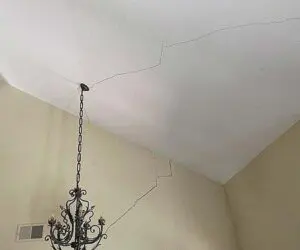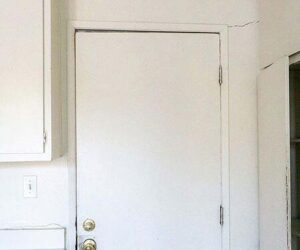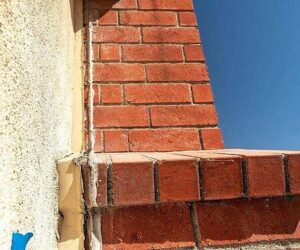We frequently hear a question from homeowners: “Are there normal foundation cracks?” The answer to that question depends on what you mean by “normal.” If by “normal” you mean foundation cracks you don’t need to lose sleep over, then yes, there are normal foundation cracks. But that doesn’t mean you should ignore such cracks. We’re going to talk more about this, so keep reading. You’ll learn what causes foundation cracks, the difference between structural vs. non-structural cracks, when to worry about foundation cracks, and more.
Are There Normal Foundation Cracks?

Structural vs. Non-Structural Cracks
There are two types of foundation cracks, structural and non-structural. As we noted above, we can say that non-structural cracks are normal. However, that doesn’t mean they should be ignored. Here’s the difference between structural and non-structural foundation cracks:
Structural Foundation Cracks
Structural cracks are cracks that affect a foundation’s structural integrity.
The following are common signs a foundation crack is structural:

- Stair step cracks in brick or masonry
- Cracks that go across the ceiling and down the wall
- Uneven floors
- Doors and windows that don’t open and close properly
- Moldings that are separating from the ceiling or wall
If you see any of the above – or anything else you find suspicious – contact a foundation repair contractor immediately for an evaluation and repair estimate.
Non-Structural Foundation Cracks

Non-structural foundation cracks are usually:
- Vertical and hairline
- Less than 1/8 inch wide
- If present in a concrete block wall, non-structural cracks will be limited to a single block
What Causes Structural Foundation Cracks?
Expansive soil – Expansive soil has a lot of clay in it, and because of this, it swells when it soaks up moisture and shrinks when it dries out. This creates movement in the ground under the foundation leading to differential settlement.
Soil that’s prone to erosion – Erosion-prone soil can lead to the formation of voids beneath the foundation. When the foundation settles into the voids, differential settlement occurs.
Soil that wasn’t adequately compacted before construction began – Soil needs to be tamped down before construction starts. If this isn’t done correctly, it could lead to differential settlement.
Heavy excavation next to the foundation – If your neighbor digs a big hole too close to your home, it could destabilize the soil under the foundation and cause differential settlement.
Seismic activity – This one is probably self-evident.
Frost heave – When soil freezes, it expands and pushes upward against the foundation, causing it to heave. When the soil thaws, the foundation settles back down. Over time, this can lead to differential settlement.
For more information, see What Is Foundation Settlement?
When Should You Worry About A Foundation Crack?
You should start worrying about a foundation crack when it’s structural. If you see a structural crack, contact a pro right away and ask for a foundation evaluation. Most foundation repair contractors will do the evaluation for free and then give you a repair estimate.
Now, this doesn’t mean you should ignore non-structural cracks, though. As we noted above, a non-structural crack in a foundation wall caused by shrinkage during the curing process can be a conduit for water to enter your crawl space, for example. Also, sometimes a structural crack can masquerade at first as a non-structural crack. For example, if you see a non-structural crack start to grow, you probably have a structural crack on your hands.
How To Repair Foundation Cracks
Structural Cracks
Structural cracks caused by differential settlement can be repaired in various ways, including push piers or helical piers. The piers strengthen the foundation by anchoring it to stable soil.
Repairing structural foundation cracks is not a DIY fix. Structural cracks should only be repaired by experienced foundation repair contractors.
Non-Structural Cracks
Hairline non-structural cracks caused by shrinkage are suitable for DIY repairs using epoxy crack repair kits. However, it’s always best to have a professional look at the crack just to be sure.
Preventing Foundation Cracks
Believe it or not, excess water in the soil that can’t drain off causes most foundation problems. That means you can go a long way toward preventing foundation cracks by controlling groundwater around the foundation. Here are a few ways to do that:
If necessary, regrade your yard so it slopes away from the foundation – If the yard slopes toward the house, water will drain toward the foundation. This is what you’re trying to avoid.
If your downspouts are too short, install extensions – You don’t want downspouts releasing water next to the foundation where it can soak into the soil. Extensions are inexpensive and easy to install.
Make sure your gutters aren’t clogged with dead leaves and other debris – Clogged gutters can cause water to spill over the side of the house and soak the soil around the foundation.
Don’t plant flowers, shrubs, etc., next to the foundation – When you water them, you’ll be adding more water to the soil.
Install a drain tile system – When it comes to foundation waterproofing, a drain tile system is a gold standard. Instead of merely putting up a barrier to keep water out, they prevent excess moisture from building up in the soil in the first place.
If you’re concerned about foundation cracks in your home and are in our service area in Southern California and Arizona, get in touch with us today for a free foundation evaluation. No hidden fees or pushy sales tactics, and you’ll hear from us within 24 hours.






